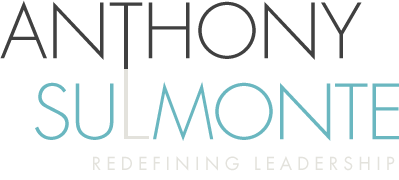Using an Outcome Approach in Leadership
1. Define the Expected Outcomes

To communicate and achieve expected outcomes, break down the steps to be clear and specific.
Expected Outcome 1: The Quality of Work
First, define what success looks like and what it does not. Be clear in how the work product will be used by others. For instance, how it will provide greater accuracy in managerial decision making, how it will bring more efficiency to a workflow, and/or how it may be used in evaluating different alternatives to address business challenges.
Expected Outcome 2: The Deadlines that Need to Be Met
Next, be specific as to when the deliverables are due, why they are due when they are, and the related consequences if the deadlines missed.
Expected Outcome 3: Resources and Support
Then, be specific as to the resources that are available to support the work that needs to be done. This should include who, what, where, why, and how. Include the time, money, and people that are available and necessary to support them in meeting the desired outcomes.
2. Define the Value Proposition and Purpose
The value proposition is a promise of value to be delivered, communicated, and acknowledged.
The questions below will help facilitate the value proposition and purpose discussion. This is a critical step. Success or failure in this activity will have a significant impact on whether you achieve the expected outcomes. A high level of trust will increase the quality of this activity, in contrast, a low level of trust will create a less desired result.
Individual: What is in it for them? Why it is important to them? What would being successful feel like to them when they have achieved their goals? What skills will they have developed because of the assignment?
Team: What is in it for the team? Why is it important for the team? How would the team feel about a successful result?
Organization: What is in it for the organization? What would be the impact on the growth of the organization? How would a successful result of the project impact the overall organization and culture?
Do not be narrow in your thinking, use a mindset that includes both the short-and-long- term impact in all three perspectives.
3. Outcome Accountability
Upon completing steps 1 and 2 there needs to be a plan that outlines the commitments and expectations that have been agreed to with the individual/team and you. If this is done well, you will increase the likelihood that the individual or team will take ownership.
Be clear, transparent, and candid about the challenges that will present themselves and the level of commitment that will be required to achieve desired outcomes. Do not forget to be specific when including the opportunities for growth and how you will support them in achieving success.
4. Plan
The plan should include all the key points and important dates captured in steps 1-3. Remember to review and rewrite the plan until the document represents all the important aspects. This is a reiterative process; all parties should agree on the final document.
5. Communicate Expected Outcomes
Communicating the expected outcomes will take a different form depending upon the scope of the work or role of the individual or team. The intent of this step is to let others know the reason that the work is important and how they might be impacted by it. This communication should also explain how the scope of the work fits into the work of the team and the organization, and who will be impacted during or after the work is complete.
6. Monitor Progress: Both Results and Process Measurements
In general, if steps 1- 5 are done well, then you are prepared to execute. Ongoing communication, candid feedback, and alignment of roles, responsibilities, and expectations are critical to meeting both results and process outcomes. This step is an opportunity for both the individual and the leader’s development.
7. Celebrate, Recognize, and Learn
Leaders often forget to celebrate or recognize the individuals’ or groups’ contributions. Recognition is a critical aspect of motivating others and is known to increase employee retention. Be specific in what you are recognizing the individual or team for. Do not use general terms. How you make someone feel is often more important to them than what you said or did for them.
The pursuit of excellence and a focus on continuous process improvement requires that we look objectively at the outcomes produced. Open conversations around what worked, what did not, and what you would do differently will go a long way in learning from the experience.
For more information on redefining your leadership practices with a leadership coach please visit asulmonte.com and schedule a free consultation.


